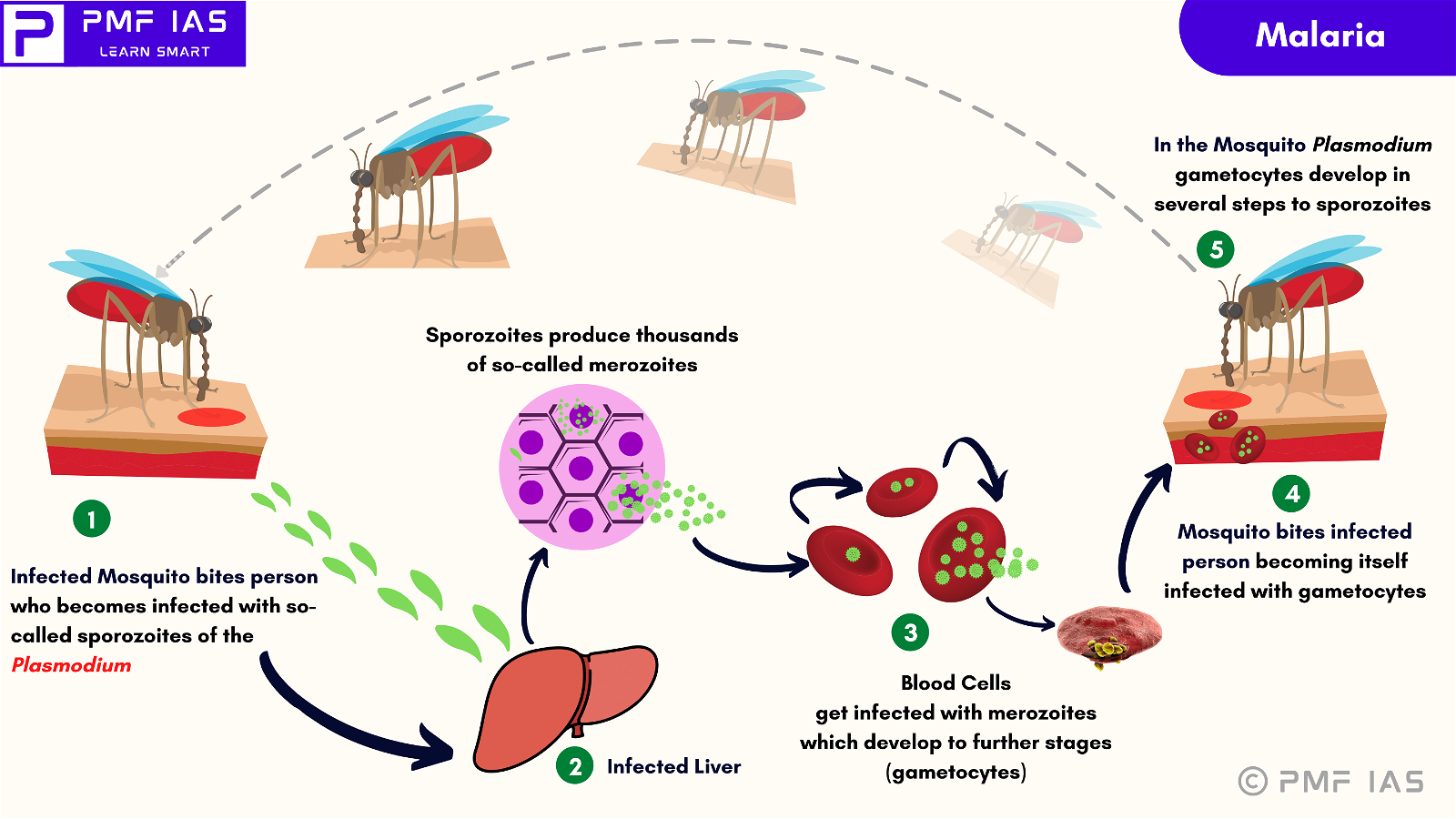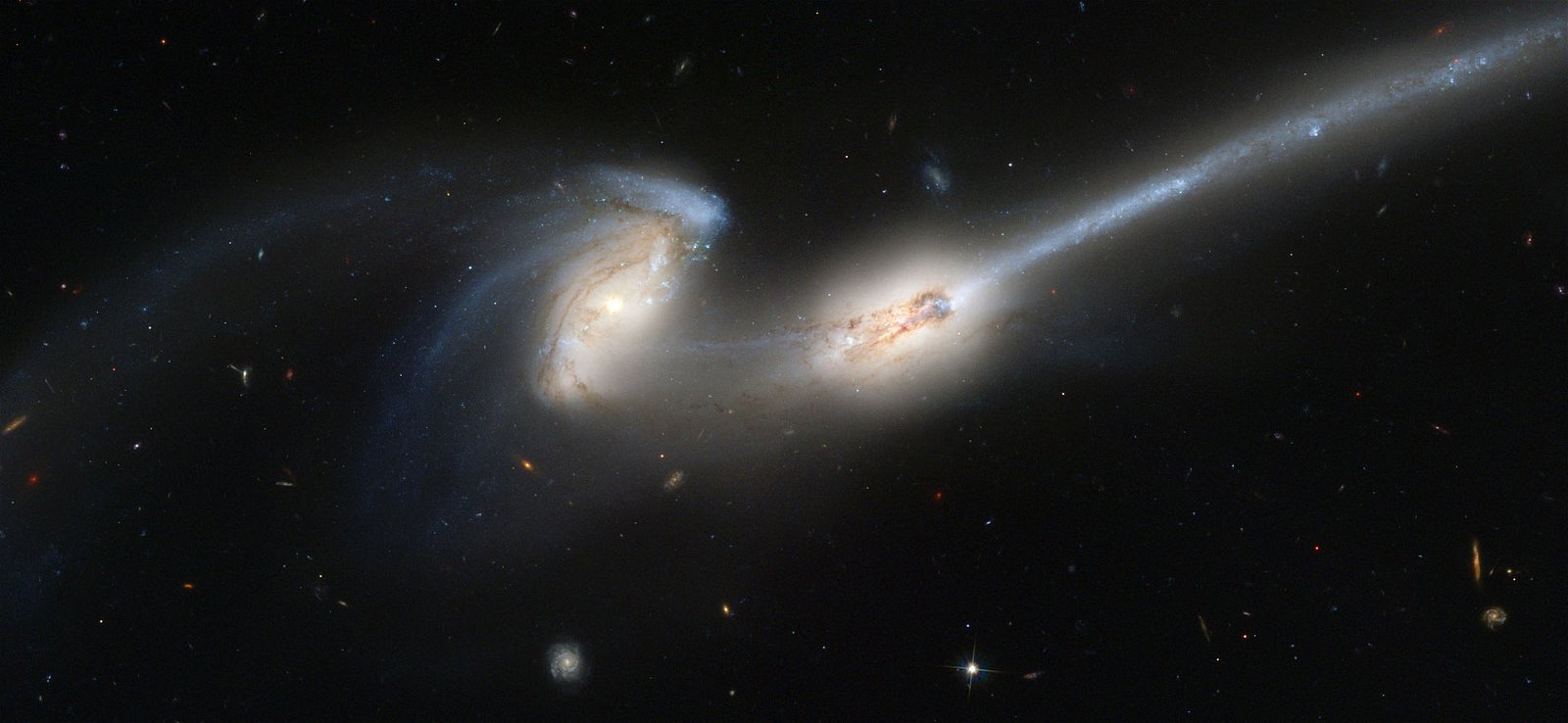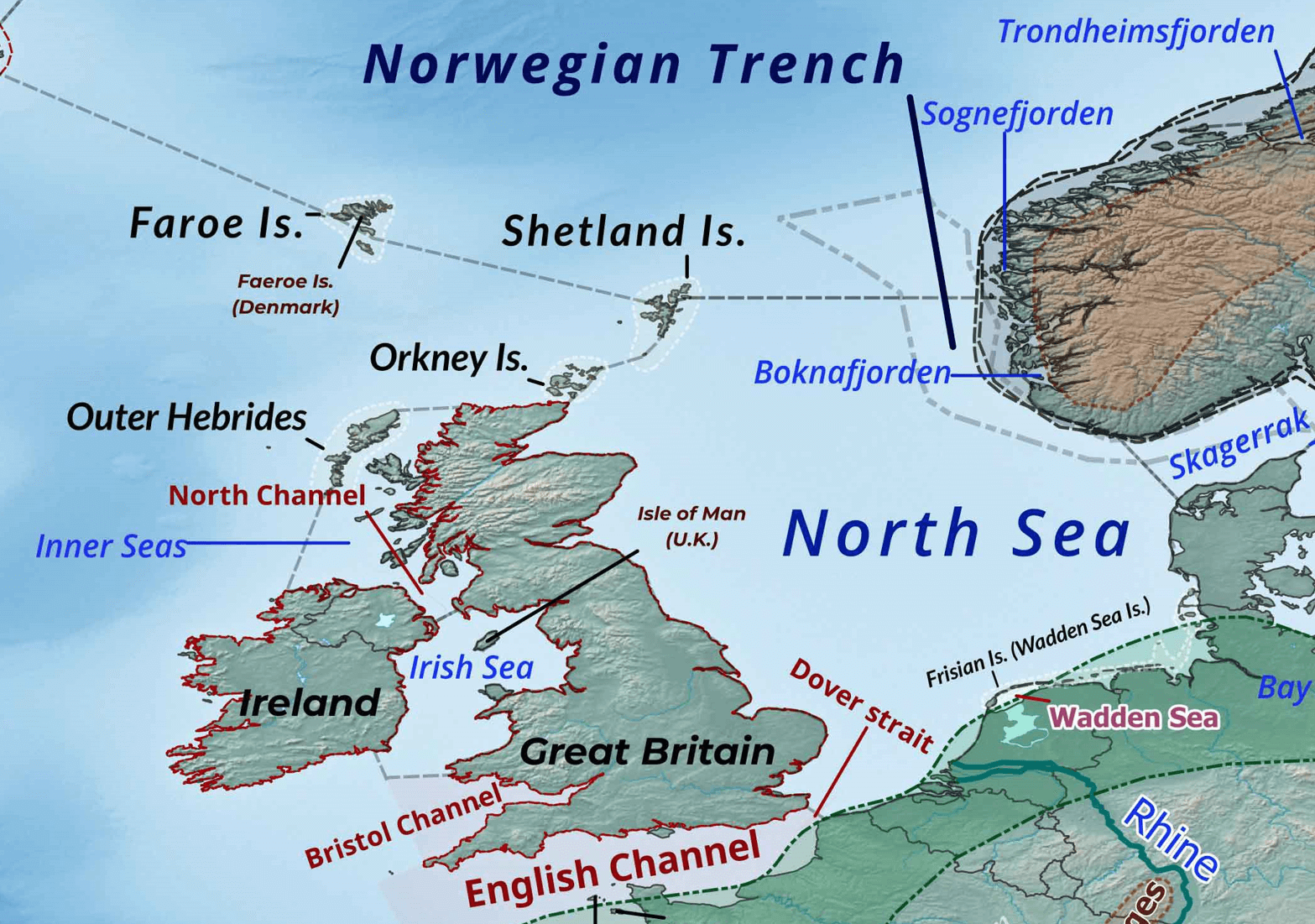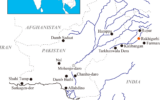
Current Affairs for UPSC Civil Services Exam – June 16-17-18, 2024
Subscribers of "Current Affairs" course can Download Daily Current Affairs in PDF/DOC
Subscribe to Never Miss an Important Update! Assured Discounts on New Products!
Must Join PMF IAS Telegram Channel & PMF IAS History Telegram Channel
{GS1 – Geo – PG – Climatology} Bayesian Convolutional Neural Network (BCNN)
- Context (IE): The Hyderabad-based Indian National Centre for Ocean Information Services (INCOIS) has developed a new product, a Bayesian Convolutional Neural Network (BCNN).
- BCNN uses Artificial Intelligence (AI), deep learning, and machine learning (ML) to improve forecasts.
- The model’s prediction relies on the fact that El Niño or La Niña are connected to the slow oceanic variations and their atmospheric coupling, which gives sufficient lead time to issue early forecasts.
- It calculates the Niño3.4 index value — used to determine the different phases of ENSO phases — and makes the forecast.
- The index value is obtained by averaging the sea surface temperature (SST) anomaly in the central equatorial Pacific, extending from 5°N to 5°S and 170°W to 120°W.
- It will predict the emergence of El Niño and La Niña conditions of El Niño Southern Oscillation (ENSO) up to 15 months in advance. Existing models can give a prediction up to six to nine months in advance.
- However, historical weather data is needed to feed into BCNN to generate forecasts. Such data is available for lands but not oceans.
Existing models
- Statistical model: It generates forecasts based on various information sets received from different countries and regions.
- Dynamic model: More accurate than static model, involving 3D mathematical simulation of the atmosphere done using High-Performance Computers (HPC).
{GS2 – IR – Diaspora} Kafala System
- Context (TH): The recent fire in Mangaf, Kuwait and the death of Indian migrant workers underscores the poor living conditions and neglect of low-income workers’ rights and well-being in GCC states.
Kafala System
- The Kafala system, prevalent in the GCC states, is a complex of laws and practices that ensure the state and citizens hold all the power. At the same time, individual migrants are treated as temporary.
- It ties migrant workers’ visas to their employers and allows employers significant control over workers’ lives, including housing, food, and transportation.
- This system is the root cause of the vulnerability and exploitation of migrant workers in the region.
- Low wages and restricted movement prevent workers from challenging poor conditions.
- The absence of worker unions further silences them and hampers their ability to organise for better rights.
- During the COVID-19 pandemic, GCC states, including Kuwait, confined migrants in crowded accommodations, limiting access to services and deporting thousands.
Gulf Cooperation Council (GCC)
- The GCC is a political, economic, social, and regional organisation.
- It was formed to address regional challenges faced by the Arab States of the Gulf.
- Members: Bahrain, Kuwait, Oman, Qatar, Saudi Arabia, and UAE.
India-GCC Relations
Strategic Importance
- Geographical Proximity: The GCC borders India across the Arabian Sea, making it a close neighbour.
- Energy Security: The GCC’s substantial oil and gas reserves are crucial for India’s energy needs.
- Large Indian Expatriate Community: Millions of Indians (diaspora) live and work in GCC countries.
- Shared Strategic Goals: Both India and the GCC desire regional stability and security.
Economic and Commercial Relations
- India’s economic linkages with the GCC have increased steadily, especially due to growth in oil imports.
- During FY23, India-GCC bilateral trade stood at US$ 184.55 billion.
- GCC is India’s largest bloc trading partner.
- Four India-GCC Industrial Conferences have been held to promote industrial cooperation.
{GS2 – IR – India-Pak} WB Expert to Examine Hydroelectric Projects in J&K
- Context (IE): A delegation from Pakistan, along with a World Bank-appointed neutral expert, is set to visit Jammu and Kashmir (J&K) to discuss and examine hydroelectric projects.
- The neutral expert will be tasked with examining the Ratle Hydroelectric Project in Chenab Valley and the Kishanganga Power House in Bandipore’s Gurez.
- The discussions will take place under the 1960 Indus Waters Treaty, backed by the World Bank.
- Pakistan previously objected to hydroelectric projects in J&K, fearing reduced water flow.
- In 2015, after failing to agree with India, Pakistan asked the World Bank to appoint a neutral expert but later opted for arbitration to resolve the dispute.
For more Details: visit > Indus River System
{GS2 – IR – Multilateral} 46th Antarctic Treaty Consultative Meeting (ATCM)
- Context (IE): India hosted the 46th Antarctic Treaty Consultative Meeting (ATCM) in Kochi.
- In Kochi, India announced a successor to its 35-year-old Maitri research base, Maitri II.
- The Kingdom of Saudi Arabia became the latest entrant to the Club of Antarctic Treaty Parties.
- All-inclusive governance: India stressed that geopolitics from the mainland must not be a deterrent to Antarctica‘s governance issue.
- India also stressed that the treaty cannot remain as an ‘exclusive club’ of select nations.
|
Tourism in Antarctica
- Operated mostly by private tour operators of select countries, Antarctica has been seeing an exponential rise in the number of visitors.
- India had first raised concerns at the New Delhi ATCM meet way back in 2007.
- A resolution and an annexe covering the environmental liability aspect of activities in Antarctica were nearly worked out.
{GS2 – Vulnerable Sections – Elderly) HelpAge India Report on Elderly
- Context (TH): HelpAge India recently released a report titled ‘Ageing in India: Exploring Preparedness & Response to Care Challenges’ to commemorate ‘World Elder Abuse Awareness Day’ on June 15.
|
Key Findings
Financially and Social Insecurity
- The report revealed that nearly 65% of elders are financially insecure with their current income.
- Around 40% of illiterate elderly reported no access to income sources (29% of literate respondents).
- One-third of elders had no income last year; among these, women (38%) are higher than men (27%).
- Only 29% reported having access to social security schemes like old-age pensions, provident funds, etc.
- Only around 15% of elderly persons reported currently working (24% of males and 7% of females). Work participation varied marginally between tier I cities (17%) and tier II cities (14%).
- Awareness of the Maintenance and Welfare of Parents and Senior Citizens Act, 2007, was quite low, with only 9% overall awareness (11% of males, 6% of females, and 6% aged 80+).
Health Challenges
- ~52% reported facing at least one challenge related to primary or instrumental activities of daily living.
- Over half (54%) of elders suffer from two or more NCDs, such as diabetes and hypertension.
- While 79% visited government hospitals in the past year, nearly half (47%) of those above 80 lacked personal income, suggesting limited access to private facilities.
- Only 31% of elderly people have health insurance – men (33%) and women (29%).
|
Caregiving and Elder Abuse
- Most elderly people rely on spouses or children for care when bedridden, with a higher prevalence in Tier II cities (66%) compared to Tier I cities (57%).
- Around 29% of caregivers, particularly women (36%), reported facing physical difficulties in providing care. 7% of respondents reported experiencing elder abuse.
Digital Divide
- 59% of elders lack access to digital devices (smartphones are the most common device).
- Digital device access dropped significantly with age, with only 26% of those over 80 having any device.
- Of those with devices, 34% used them for social media and entertainment purposes.
{GS3 – Agri – Tech} Direct seeding of rice (DSR)
- Context (IE): The DSR (or ‘Tar-wattar’ technique), which the Punjab government is actively promoting, has several benefits over traditional transplantation.
Refer to Direct Seeding of Rice (DSR) vs. Transplantation Method for more details.
Role of Soil Texture in DSR
- DSR is more suitable for heavy or medium-to-heavy-textured soils. It should be avoided in light-textured soils. This is primarily because light-textured soils do not retain water well.
- Lighter soils need irrigation every second or third day countering the water-saving benefits of DSR.
|
Importance of iron content
- Soil with severe iron deficiency and weed problems must not be cultivated using this technique.
- Iron-deficient medium-textured soils are unsuitable. This is likely to be more of a problem in fields previously cultivated with cotton, maize and sugarcane.
- Lack of iron content can severely impact yields and lead to major financial losses for farmers.
- In such soils, green-coloured ferrous iron needs to be applied instead of brown oxidised iron.
Chelated fertiliser
|
Path forward for DSR
- Comprehensively educating farmers is key to enabling the adoption of a new technique and departure from age-old tried and tested methods.
- Handholding the farmers through the whole process can address the negative feedback from the farmers who faced losses due to cultivation on unsuitable soils.
{GS3 – Envi – CC} Dengue Fever on the Rise in Europe
- Context (IE): In recent years, Europe has seen a significant rise in locally transmitted dengue cases, with 2022 and 2023 surpassing the combined total of the past seven decades.
- Warmer conditions in Europe are aiding the spread of invasive mosquitoes that transmit dengue, chikungunya, and Zika viruses.
How Dengue Spreads in Europe
- For local transmission to occur, mosquitoes need to be established in the area, and the temperature needs to be high (between 15 and 35 degrees Celsius) enough for them to breed and survive.
- The virus also needs to be introduced into the community (typically by a traveller).
- Travel-related dengue cases in Europe are common, but the risk escalates when infected individuals encounter warm weather, urban areas, and Aedes mosquitoes, facilitating virus transmission.
- This was previously rare in Europe but has become increasingly prevalent in recent years.
Factors Contributing to the Rise in Locally Transmitted Dengue Cases
- Extended periods of warm conditions facilitate mosquito breeding and increase mosquito populations.
- Aedes albopictus mosquitoes have spread across Europe, particularly in Mediterranean and Central European regions, thriving near densely populated areas.
- Increased Travel-Related Transmission: With global dengue cases doubling from 2010 to 2022, travellers returning from endemic regions contribute to the virus’s spread.
{GS3 – Envi – Conservation} Cheetah introduction in Gandhi Sagar WLS
- Context (IE): The Gandhi Sagar Wildlife Sanctuary in western Madhya Pradesh is set to become the second home for cheetahs in India, after the Kuno National Park.
Favouring conditions in Gandhi Sagar WLS
- Water availability: Chambal River cuts the sanctuary into two almost equal halves, and Gandhi Sagar Dam (the country’s third largest) provides enough water.
- Savanna ecosystem: Gandhi Sagar‘s savanna ecosystem is similar to the savanna ecosystem of Maasai Mara National Reserve in Kenya.
- Expansion potential: The cheetah habitat in Gandhi Sagar can be extended to around 2,000 sq km., depending upon the coordination with Rajasthan’s Bhainsrodgarh sanctuary.
Challenges in Gandhi Sagar WLS
- Prey base: Despite the relocation of ungulates, the population still lacks the needed prey base. According to a Wildlife Institute of India report, “considering the finite growth rate of ungulates to be ~1.33, a population of about 350 ungulates are required for a single cheetah coalition family”.
|
- Co-predators population: Several co-predators, including sloth bears, striped hyenas, grey wolves, golden jackals, jungle cats, Indian foxes, marsh crocodiles, and leopards, will compete with cheetahs.
- Human activity: Unlike Kuno NP, Gandhi Sagar has a human population and associated agriculture, livestock rearing and commercial fishing.
{GS3 – IE – Trade} Verification Mechanism for RoDTEP Scheme
- Context (IE): The Indian government is developing a system to verify tax refunds provided under the Remission of Duties and Taxes on Exported Products (RoDTEP) Scheme. It aims to prevent countervailing duties (CVDs) imposed by major importing countries like the EU and the USA.
|
Need for Verification
- USA requested clarity on India’s method for verifying the rates provided to exporters under the Scheme.
- The commerce ministry determines the RoDTEP rates based on recommendations of the GK Pillai committee. The USA does not recognise the method and is seeking an official verification system.
New Verification Mechanism
- The Finance and Commerce Ministries are collaborating to establish an institutional verification system for RoDTEP. This system will likely involve:
- Defined procedures and formats for verification.
- Deployment of teams at the field level to conduct verifications.
- Collaboration with the Directorate General of Trade Remedies (DGTR).
{GS3 – S&T – Tech} Extreme heat and EV batteries
- Context (IE): Electric vehicle (EV) owners are concerned about the impact of extreme temperatures on lithium-ion batteries.
- These batteries function optimally at ambient temperatures up to 35 degrees Celsius. Lithium-ion batteries are particularly heat-sensitive, while solid-state batteries exhibit greater resilience.
Impact of extreme heat on lithium-ion batteries
- Longevity loss: The flow of ions in a battery gets accelerated at high temperatures, causing premature ageing due to unwanted chemical reactions.
- Thermal runaway: In extreme cases, exposure to high temperatures can also lead to thermal runaway, which can cause fires.
- Efficiency loss: In extreme heat, the entire sub-system of electrochemical, electrical, and electronic components gets heated up, leading to overall efficiency loss.
- Among lithium-ion batteries, the lithium iron phosphate (LFP) chemistry is more thermally stable than the lithium cobalt oxide (LCO) or the lithium manganese oxide (LMO) chemistry.
- Densely populated battery packs in electric two-wheelers are usually more prone to heat-related issues than those in three- and four-wheelers, which offer options for more efficient liquid cooling systems.
Efforts to address the issue
- Cooling: Air- and water-based cooling systems are used to offset the increase in ambient temperature.
- Insulation: The insulation material and thickness are carefully chosen to keep cells cooler by 5 to 7 degrees Celsius compared to the ambient temperature.
Testing standards for EV batteries
- The AIS-156 and AIS-038 were developed after EV fires in 2022. The standard makes battery management systems (BMS) mandatory.
- The latest BMS technologies employ predictive algorithms and real-time temperature monitoring for each cell. They can divert power from hotter cells and activate cooling systems proactively.
- The testing standards also require a battery pack to have a venting system. If there’s space in a pack, hot air can escape, restricting fire propagation.
- AIS-038 recommended that the battery pack must be tested at 45 degrees Celsius.
Concerns with testing standards
- The testing should be conducted at various drive cycles and by charging the pack through a fast charger to validate the battery’s thermal performance by simulating real-life cases.
- EV manufacturers must evaluate longevity under conditions that mimic real-world conditions.
Localisation: a promising solution
- Experts suggest that R&D done outside India or any advanced cell chemistry (ACC) battery developed outside India will not suit Indian conditions in extreme heat situations.
- Environments in China & India are different, so the copy-paste trend will not work for batteries.
- Local manufacturing also means faster iteration based on real-world data.
- Developing our own technology customised to Indian requirements is a major factor in the sustainability of the advanced cell chemistry (ACC) ecosystem.
- The Production Linked Incentive scheme and National Programme on Advanced Chemistry Cell (ACC) Battery Storage are being run to promote it.
|
Refer to Lithium batteries to know more.
{Prelims – In News} Capsaicin – The Science Behind the Spice
- Context (IE): Food safety authorities in Denmark have recalled three varieties of South Korean spicy instant noodles due to potential risks of “acute poisoning.”
- The food authorities stated that the noodles contain dangerously high levels of capsaicin, the compound responsible for chilli peppers’ spiciness. This poses a health threat, particularly to children.
What is Capsaicin?
- Capsaicin is most abundantly found in the “placenta” (white membrane to which seeds are attached) of some chilli peppers, which are fruits of plants belonging to the genus Capsicum.
- These plants were introduced to the rest of the world from South and Central America.
- Capsaicin binds to TRPV1 receptors in humans’ nose, mouth, skin, and insides, which are responsible for detecting heat and pain.
- The chemical capsaicin tricks receptors, making the brain perceive a burning sensation despite no actual temperature rise. This leads to discomforts like sweating, a red face, a runny nose, teary eyes, gut cramps, and diarrhoea as the body attempts to cool down and expel the heat-causing compound.
- Capsaicin also protects chilli plants from fungi and insects.
|
Potential Health Risks
- While capsaicin poisoning is rare, consuming too much of the chemical can still be harmful.
- High concentrations of capsaicin can produce heartburn, gastrointestinal pain, and diarrhoea, and long-term ingestion of high levels may lead to chronic gastrointestinal disorders.
{Prelims – In News} New Zealand Scraps ‘Burp Tax’ on Livestock Emissions
- Context (IE): New Zealand recently announced the scrapping of the ‘burp tax’, a scheme introduced in 2022 to tax greenhouse gas emissions from livestock.
- The tax aimed to curtail methane emissions from ruminant species, which are responsible for nearly half of the country’s greenhouse gas emissions.
- Ruminants like cows, sheep, goats, and buffaloes have a unique digestive system that facilitates the breakdown of otherwise indigestible food through fermentation.
- This process produces methane (a potent greenhouse gas responsible for 30% of global warming since preindustrial times), primarily emitted through burping by ruminant animals.
- The burp tax faced strong opposition from farmers, who argued it would harm their livelihoods, particularly when coupled with other agricultural emission regulations.
|







![PMF IAS Environment for UPSC 2022-23 [paperback] PMF IAS [Nov 30, 2021]…](https://pmfias.b-cdn.net/wp-content/uploads/2024/04/pmfiasenvironmentforupsc2022-23paperbackpmfiasnov302021.jpg)











